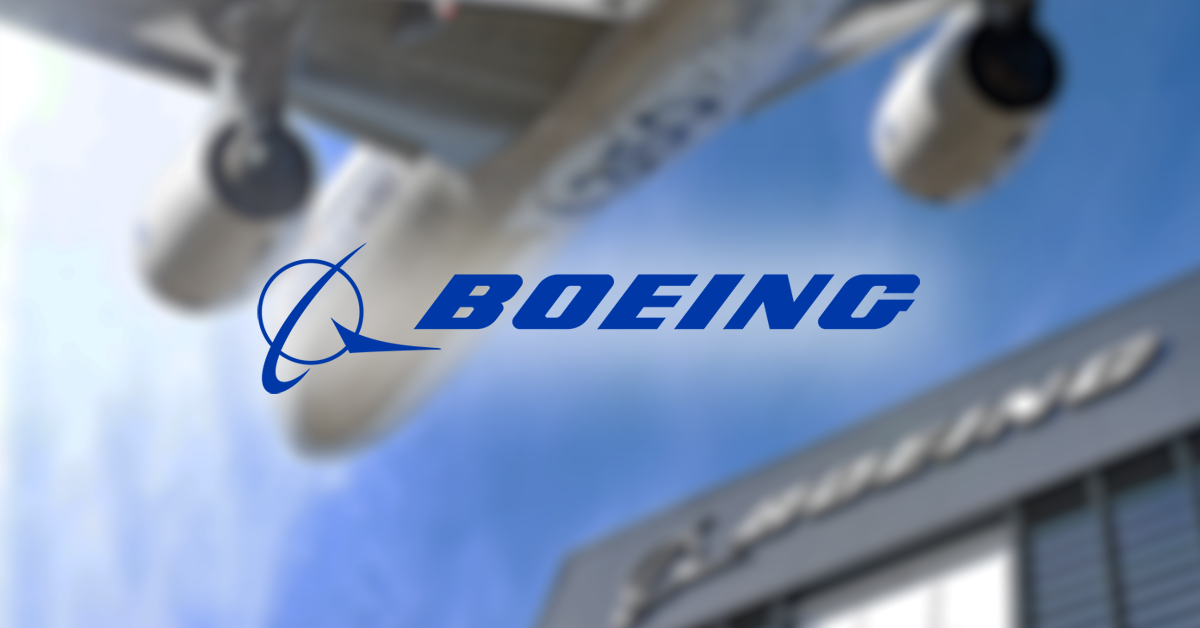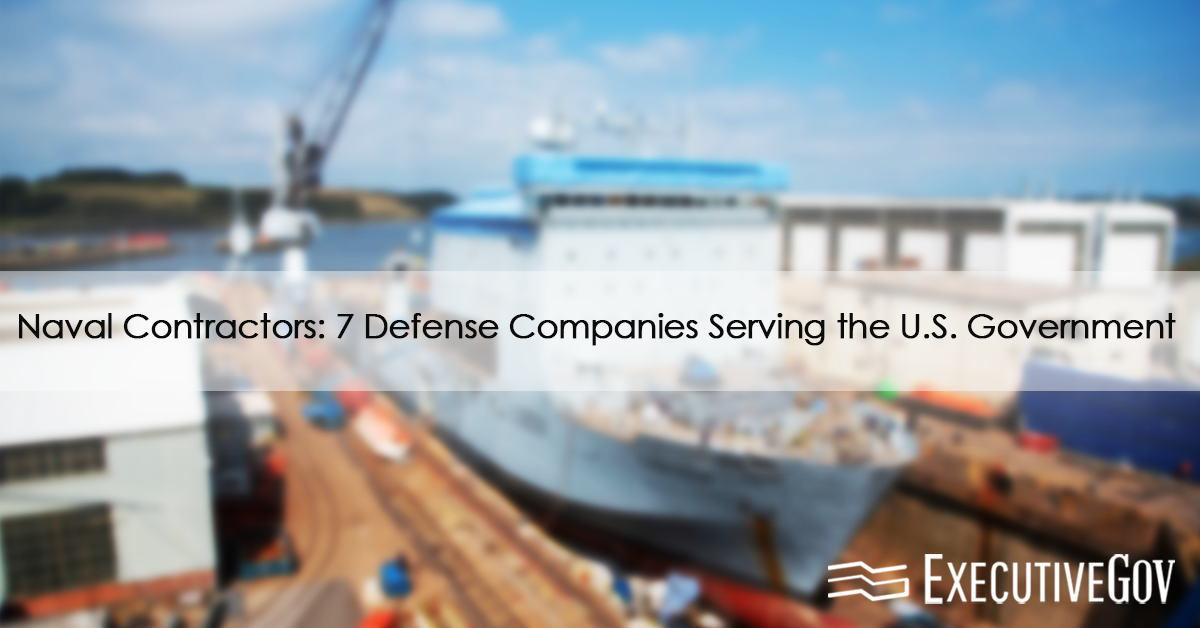Naval contractors are integral to the operational readiness and technological advancement of the U.S. Navy and Coast Guard. These large defense companies collaborate closely with the U.S. government to deliver critical support services and cutting-edge products.
Notable contributions of leading naval contractors span the entire lifecycle of naval assets, from design and construction to maintenance, modernization, and support, ensuring that maritime forces are equipped to fulfill their missions effectively.
Table of Contents
A Look into the Naval Spending: What Are the Numbers?
President Joe Biden signed the Fiscal 2023 National Defense Authorization Act into law, providing $816.7 billion to the Defense Department. It covers the increasing Navy’s shipbuilding budget to $32.6 billion to construct 11 battle force ships, including destroyers, submarines, fast transports, and other critical vessels.
The U.S. Navy’s budget allocation for fiscal year 2023 was $230.8 billion to fulfill the agency’s national security strategy and defense priorities. It also reflects Secretary of the Navy Del Toro’s goals of enhancing maritime dominance and strengthening partnerships.
Here are some of the most significant projects awarded to naval contractors for the U.S. Navy.
- Super Hornet purchase: The Navy awarded Boeing with a $1.3 billion contract for the final 17 F/A-18E/F Super Hornets, including a technical data package. Deliveries are expected between late 2026 and spring 2027.
- Unmanned surface vessel squadron: The Navy creates a new squadron to speed up the development of small unmanned surface vessels for missions like sensing and attacks.
- Barracks construction and improvements: The Navy is spending almost $1 billion to enhance the living conditions in the barracks. This includes eight construction projects of fully funded housing and gym upkeep to improve sailors’ lives. An extra $718 million is also allocated for improvements to the barracks.
- Constellation-class Frigate Program: The Navy is buying Constellation-class frigates. It has already bought four ships and plans to acquire 16 more for a total of 20 frigates. The budget for 2024 allocates $2.2 billion for the fifth and sixth ships to be manufactured by Fincantieri/Marinette Marine.
- Dry dock in Hawaii: The Navy is building a $3.4 billion submarine-repair dry dock in Pearl Harbor, Hawaii—the most expensive project in Navy history to date. It’s designed for Virginia-class attack submarines and should last 150 years. This is a part of the $21 billion plan of the Navy to upgrade dry docks, buildings, and equipment at Navy shipyards.
- Continuing resolution for submarine construction: President Biden signed a funding bill that includes $3.3 billion for the Columbia-class submarine program. It allows the Navy to buy advanced parts, showing the submarines’ importance in the nuclear triad.
Leading Naval Contractors and Contracts on
Here’s a list of the leading naval contractors for the U.S. federal government.
Lockheed Martin

Lockheed Martin is one of the leading naval contractors with a portfolio of advanced naval launchers, munitions, and maritime systems. It encompasses vertical launching systems, munitions, hypersonics, and projectiles catering to the U.S. Navy’s diverse missions.
Specifically, Lockheed Martin’s Rotary and Mission Systems business unit provides rotorcraft, sensors, radar systems, advanced cybersecurity, and undersea systems to the U.S. Navy.
Lockheed Martin’s key naval projects include:
- MH-60R Seahawk Helicopters: Sikorsky, a Lockheed Martin company, has finished testing the mission systems and sensors on three MH-60R SEAHAWK helicopters for the Hellenic Navy. The testing done in early December 2023 confirms that each MH-60R aircraft is a capable air weapon system for anti-submarine and anti-surface warfare missions.
- Littoral Combat Ship (LCS): Lockheed Martin’s warship design boasts speed, strength, and versatility for advanced sensors, missiles, and cyber systems.
- Hypersonic missiles: The Navy awarded Lockheed Martin a $1.2 billion contract to produce hypersonic missiles for the Navy’s Zumwalt-class destroyers.
Read more: Future Vertical Lift: The Raider X Concept
Boeing

Boeing’s Defense, Space & Security (BDS) business unit is a top naval contractor focused on designing, producing, modifying, servicing, and supporting military rotorcraft, satellites, human space exploration, and autonomous systems. As of 2023, Boeing’s BDS unit earned $59 billion in sales, 58% of which are made up of fixed-price contracts from the federal government.
One of Boeing’s standout achievements is the P-8A Poseidon. The aircraft is the military version of Boeing’s Next-Generation 737-800, equipped with advanced maritime weapons and an in-flight refueling system.
In 2024, Boeing secured a $3.4 billion contract to procure and deliver 17 P-8A Poseidon aircraft. It has partnered with several international companies for the P-8A Poseidon program, including CAE, GE Aviation Canada, IMP Aerospace & Defence, KF Aerospace, Honeywell Aerospace Canada, Raytheon Canada, and StandardAero.
Beyond the P-8A Poseidon, Boeing is engaged in other naval projects, such as the F/A-18 Super Hornet and EA-18G Growler. The naval contractor also develops and sustains the U.S. Navy’s unmanned systems, including the MQ-25 Stingray, which was delivered for testing in February 2024.
General Dynamics

General Dynamics has solidified its position among the leading naval contractors through its expertise in designing, building, and maintaining sophisticated warships and submarines for the U.S. Navy.
It collaborates with the U.S. Navy and other naval contractors on various projects. For instance, its Electric Boat business unit works with HII’s Newport News Shipbuilding on the Virginia-class fast-attack submarines.
The primary business unit of General Dynamics for the U.S. Navy is its Marine Systems segment, which consists of NASSCO, Electric Boat, and Bath Iron Works. These units design, build, and maintain the nation’s most sophisticated warships, including nuclear-powered submarines, surface combatants, and auxiliary ships.
Read more: Virginia-Class Fast-Attack Submarine USS Idaho Launches Into Thames River
Electric Boat
General Dynamics Electric Boat’s projects for the U.S. Navy include
- Designing and constructing nuclear-powered submarines, such as the Virginia-class submarines
- Providing maintenance, modernization, and repair services for various Navy ships, including Arleigh Burke-class destroyers and the USS Bataan
NASSCO
General Dynamics NASSCO offers full-service ship design tailored to its owner’s requirements. The company specializes in building auxiliary and support ships, including the John Lewis-class fleet oilers and Expeditionary Sea Base ships.
NASSCO’s earnings from Navy contracts include maintenance, repair, and modernization of the following:
- USS Chung-Hoon (DDG 93) and USS James E. Williams (DDG 95) for $754 million
- USS Chung-Hoon and USS James E. Williams for $438.5 million
- USS Bataan (LHD 5) for $311.2 million
Bath Iron Works
Bath Iron Works is a full-service shipyard specializing in designing, constructing, and supporting complex and formidable surface ships. It has been responsible for the U.S. Navy’s most advanced surface combatants for over a century.
In 2023, the shipyard has secured contracts to build three DDG /51 class ships—one each in fiscal 2023, 2024, and 2026. The contract includes options for engineering change proposals, design budgeting requirements, and post-delivery availabilities.
Raytheon Technologies

Raytheon Technologies is one of the trusted naval contractors for the U.S. Navy’s projects involving missile systems, radar technologies, and electronic warfare.
Raytheon Missiles & Defense is one of Raytheon Technologies’ key units dedicated to Navy projects. It provides cutting-edge systems, such as precision fires and integrated air and missiles. In terms of revenue, Raytheon earned $67.1 billion from federal government and foreign military sales.
The Next Generation Jammer Mid-Band is an example of Raytheon Technologies’ electronic warfare solutions for the Navy. It’s an advanced electronic attack system developed to deny, disrupt, and degrade enemy technology, communication tools, and air-defense systems.
Raytheon Technologies is currently working on several projects for the U.S. Navy, including:
- Producing AN/SPY-6(V) radars for Arleigh Burke-class destroyers, with a contract value of $619 million
- Procuring 42 maritime strike tomahawk missiles with a contract worth $124.2 million
- Developing the Next Generation Jammer with a contract value of $650 million
- Providing the U.S. Navy with engineering services for the Zumwalt destroyer for $1.68 billion
Raytheon is also collaborating with Japan Mitsubishi Electric on a $3.2 billion project to build advanced missile radar systems through 2027.
Northrop Grumman

Northrop Grumman ranks among the most noteworthy naval contractors in the U.S., earning a revenue of $39.3 billion in 2023. The company’s contributions to the U.S. Navy include missile launch systems, modular payload systems, integrated power and energy systems, and electronic chart display and information systems.
The company is actively working on various U.S. Navy projects, including:
- Construction of three MQ-4C Triton unmanned aircraft for the Navy, with a contract value of $543 million
- Sustainment and engineering services for the Littoral Combat Ship mission module
- Production of the AN/WSN-7 Inertial Navigation System to improve maritime navigation for surface ships and submarines
- Sustainment of the Joint Counter Radio-Controlled Improvised Explosive Device Increment One Block One system for protection against radio-controlled improvised explosive devices through electronic warfare
- Design of autonomous vertical takeoff and landing (VTOL) uncrewed aircraft systems for DARPA to enhance Navy capabilities to improve ship-to-shore movement of parts and supplies
Northrop Grumman teamed up with Serco to develop collective training solutions for the British Army. Moreover, it worked with Firefly Aerospace to produce an upgraded version of the Antares rocket, known as the Antares 330, to reduce its reliance on Ukrainian and Russian suppliers for the first stage of launching Cygnus cargo missions to the International Space Station.
Huntington Ingalls Industries

Huntington Ingalls Industries is known for designing, building, and maintaining various U.S. Navy and Coast Guard naval vessels. As one of the top naval contractors, the company has raised its full-year revenue to $11.5 billion due to higher demand for its naval warships amid rising geopolitical tensions.
The company operates in three segments. Ingalls Shipbuilding, Newport News Shipbuilding, and Mission Technologies.
- Newport News Shipbuilding has secured a $65.8 million modification contract for naval nuclear aircraft carriers, providing engineering and technical support for CVN 80 and CVN 81 aircraft carriers until 2027.
- Ingalls Shipbuilding designs and constructs amphibious transport dock LPD 32 under a $1.3 billion modification. It also secured a $936 million contract for constructing Arleigh Burke-class destroyers.
- Mission Technologies is HII’s Technical Solutions division. Instead of directly being involved in shipbuilding, it focuses on C5ISR, AI applications, and machine learning for battlefield decisions and combat readiness.
Furthermore, HII’s projects for the U.S. Navy cover a wide range of ship classes. It is the sole builder of the San Antonio class amphibious assault ships and has already delivered 32 destroyers to the Navy. It also constructs Columbia-class ballistic missile submarines for the nation’s strategic deterrent.
In addition, HII has strategic agreements with Babcock International to collaborate on naval nuclear decommissioning and construction opportunities in the U.S. and UK. It is also involved in the AUKUS programs to develop advanced technologies according to the trilateral agreement between the U.S., UK, and Australia.
Read more: 7 Military Shipbuilding Companies: Empowering Modern Warfare
BAE Systems

BAE Systems is a involved in naval construction and maintenance. The company mainly designs, manufactures, and supports naval ships and submarines. It also offers advanced electronic warfare solutions and mine neutralization technologies.
Built on a reputation as one of the most trusthworthy naval contractors, its projects with the U.S. Navy have resulted in several lucrative contracts, contributing to its $29 billion (£23 billion) revenue in 2023.
The Platforms & Services business unit is the segment of BAE Systems working closely with the Navy. It maintains and modernizes naval ships, naval guns, naval ship repair, and advanced precision strike munitions and ordnance.
BAE Systems is currently working on various projects for the U.S. Navy:
- Its U.S. subsidiary was contracted to repair the critical areas of the guided-missile destroyer USS Ross, focusing on the main propulsion system, berthing and dining areas, hull, ballast and fuel tanks, and superstructure until April 2024
- Under the COALESCE program, BAE Systems is developing advanced monolithic microwave integrated circuits (MIMICs) based on gallium nitride to enhance maritime electronic warfare capabilities of the U.S. Navy.
- BAE Systems secured a contract worth up to £87 million from the U.S. Department of Defense to manufacture and deliver Archerfish. It is a remote-controlled underwater mine neutralizer for the U.S. Navy until 2027.
Read more: What Are the Top 10 BAE Systems Government Contracts?
Amentum

Amentum has a rich history as a naval contractor, tracing its roots to legacy companies that have supported the Navy for over 47 years. It has provided organizational-level aircraft maintenance and logistics support for aircraft, systems/subsystems, and aircrew systems through its legacy company, DynCorp International.
Amentum offers a wide range of services to the U.S. Navy, including engineering and technical solutions, maintenance, sustainment, and modernization for naval ships and systems. It also supports submarine C5I systems and maintenance and logistics support for the Navy’s F-16 aircraft fleet.
Amentum has secured substantial contracts with the U.S. Navy, which has led to significant earnings. Notable contracts include:
- A $592 million contract by the U.S. Naval Sea Systems Command (NAVSEA) to deliver life-cycle support and other follow-on technical solutions to eligible allied international naval forces.
- A $321 million contract for submarine C5I modernization support until January 2031
- A $475 million contract for maintenance and logistics support for the U.S. Navy’s F-16 aircraft fleet until August 2031





